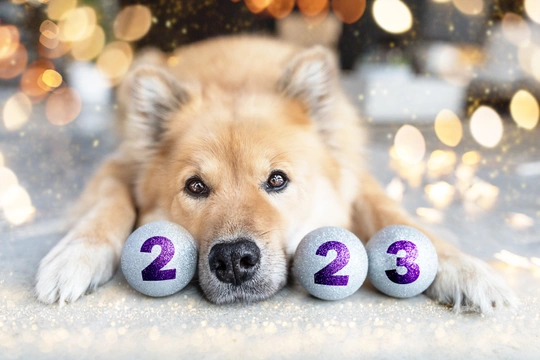
Using sounds for firework dog training
While most people enjoy fireworks, for our dogs it can be a very scary experience. They don’t know that it’s 5th November or New Year’s Eve or that Mary down the road is having a 21st birthday party. The seemingly random explosions and incredibly loud bangs, crackles and whistles accompanied by bursts of bright lights will seem even more intrusive to their highly sensitive ears – and, not unreasonably, they may be very frightened.
It's our responsibility to make sure our dogs are safe and secure. For tips on this, see https://www.pets4homes.co.uk/pet-advice/7-ways-to-help-your-dog-cope-with-fireworks.html
But, like many people whose dog is scared, you’ve probably been searching for ideas on . Here, we're going to suggest a couple of ways in which sound therapy can help. The first uses a box fan that may simply manage the problem. The second option will take time and aims to desensitise your dog, so they’re no longer scared. You’ll need to find firework sounds for dog training – fortunately, there are plenty online.
Box Fan
This simple option is known to help many dogs who are sensitive to the sound of fireworks and thunderstorms, so it’s well-worth trying it with your family pet.
Because they break up sound waves, it seems the disruption to the sound makes it difficult to pinpoint specific noises outside the room the fan is in, and this in turn promotes a more relaxing atmosphere for your dog. (If you’ve been recommended to use a ‘white noise’ machine in the past, this is a little different.)
It's best to try it in a reasonably small space, ideally where your dog usually sleeps but if that’s open plan or likely to be the noisiest area in your home, plan to use another room. Set up the fan between the source of the noises outside (eg a window) and where you hope your dog will settle down and rest. You may need to move their bed while you’re using it.
Of course, it’s a good idea to get your dog used to the fan itself well before they’re likely to be disturbed by fireworks, and preferably in the room you’ll want to use in future. Turn the fan on to its lowest setting and don’t increase it until your dog is comfortable.
Hopefully, that will solve the problem for your dog! But if not, read on.
Sound Therapy
You’ll need to start this process well in advance of any likelihood of fireworks – at least a couple of months and quite possibly a lot longer if your dog has already developed a fear of fireworks. If you’ve got a puppy, it’s a good idea to practise this anyway to prepare them for the sounds and prevent them becoming scared of the noise in future.
If your dog is particularly sound sensitive and absolutely terrified by fireworks, thunderstorms or other sudden loud noises, it’s advisable to discuss this with your vet first. They may recommend drugs to help or a behavioural specialist to consult.
Fortunately, these days it’s very easy to find firework sounds for dog training online. Try them out when your dog isn’t in earshot to see how realistic you think they sound.
Before you play the sounds in front of your dog, make sure you haven’t got the volume up too loud. The last thing you want to do is to scare them before you’ve even started the process.
To make it even more realistic, you could have the sound coming from two speakers either side of the area the fireworks sounds are likely to be coming from in future (e.g. either side of a window or back door).
The best time to work on this is when your dog is calm and relaxed – but not fast asleep. Every day, simply play the sounds, very quietly to start with (remember, your dog’s hearing is far better than your own). If your dog just seems to listen – maybe you spot an ear twitch or they look up – but remains calm, keep going. Over the coming days, you can gradually increase the sound level.
You have now begun ‘desensitising’ your dog to the sounds. Once your dog is relaxed – doesn’t react – when you play different types of firework noises loudly, you can move on to ‘counter-conditioning’.
When counter-conditioning, you want your dog to associate the noises with a pleasant experience. Decide what your dog would prefer: some tasty treats or perhaps a game with you. Then play the sounds and, after a while, offer the food or play the game. Of course, if your dog reacts badly to the sounds, try lowering the volume again.
Continue with this exercise daily until you find your dog is actually excited about the noises, anticipating that good things are about to happen (that’s your treats or games)!
Calming Home Diffuser
Every dog is unique, so how long this type of therapy will take can vary enormously. To help speed up the process, alongside it many professionals recommend using an calming diffuser which just plugs into a wall socket. This works by releasing dog appeasing pheromones which are how a mother dog naturally communicates with her puppies. They should give your dog a feeling of comfort and security and help them relax even in challenging circumstances.
For more training advice, please visit our dog coach Vicky Carne's website.



